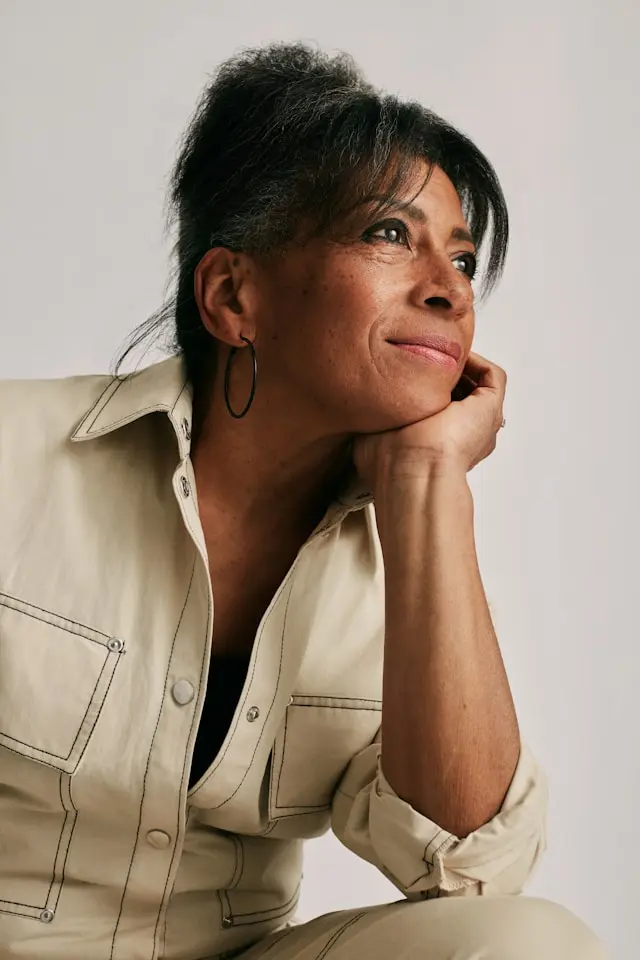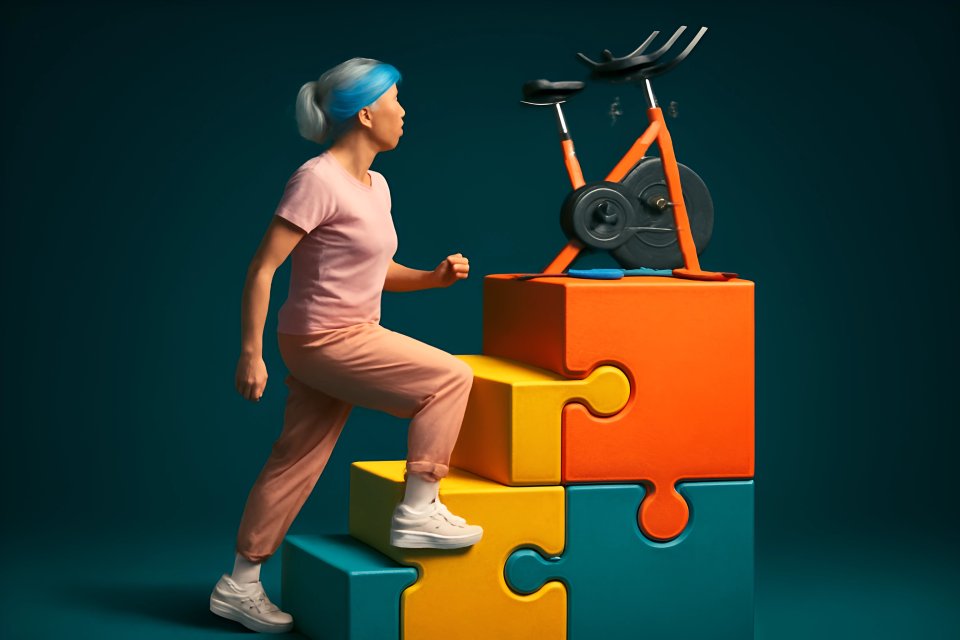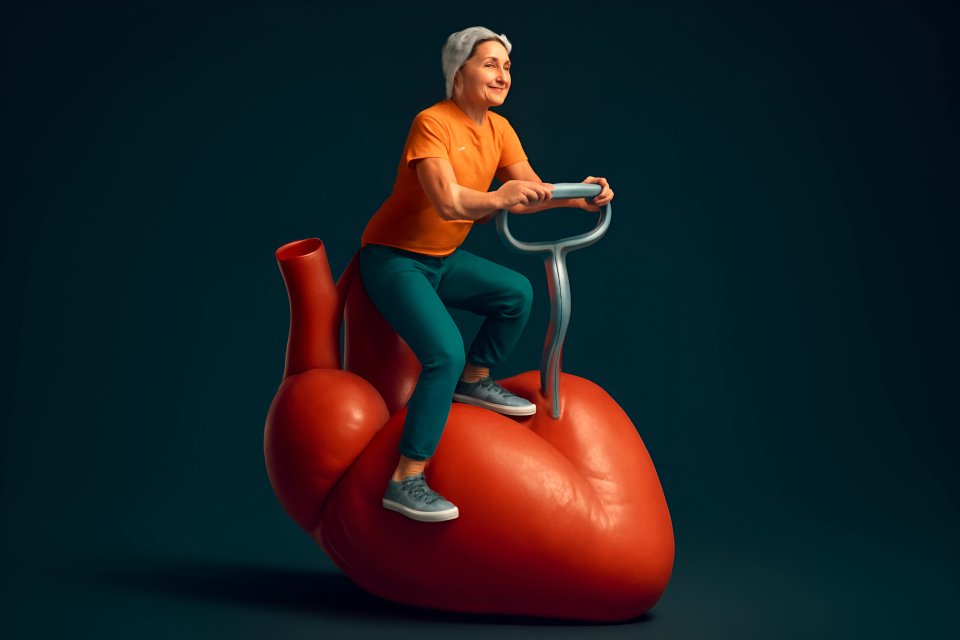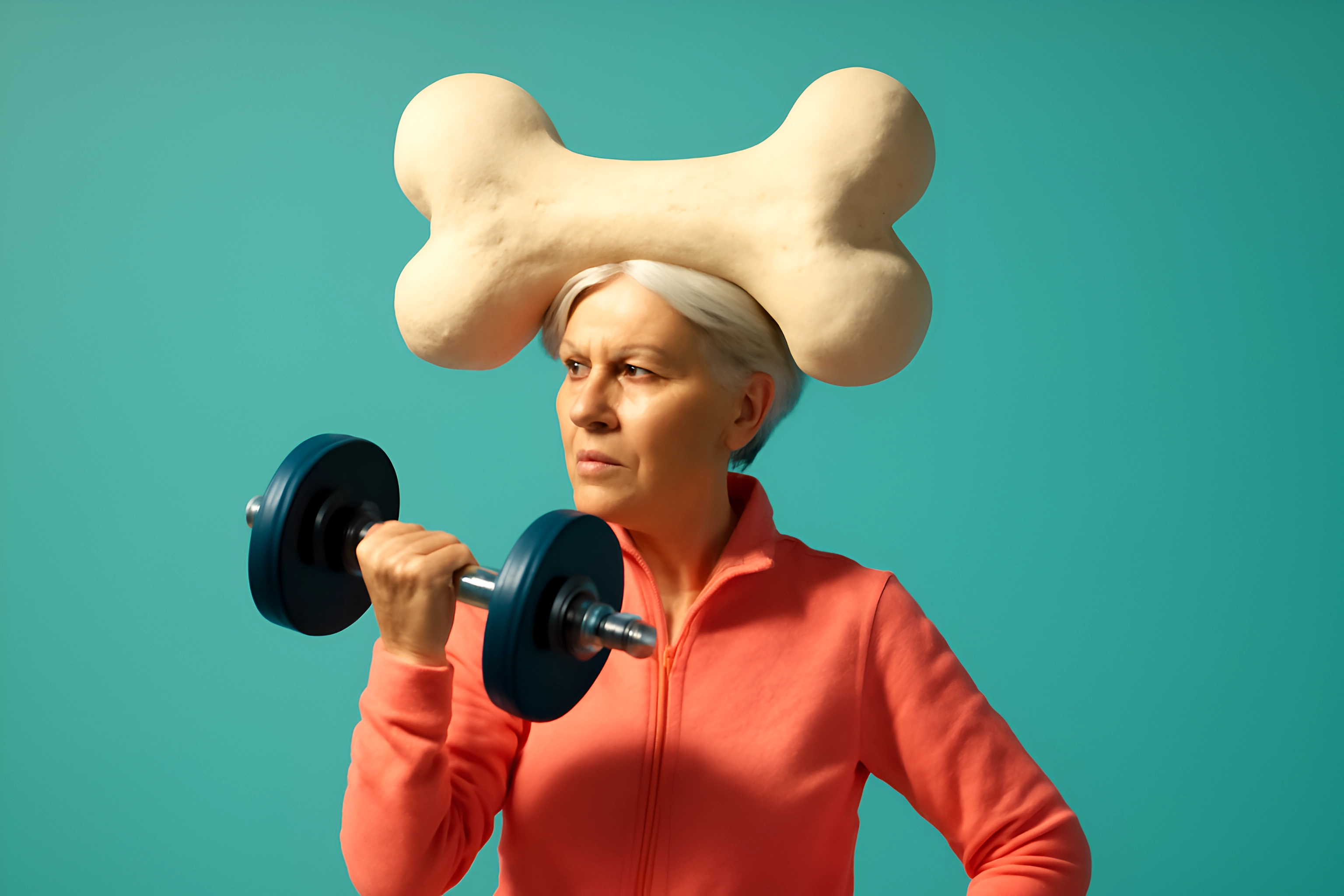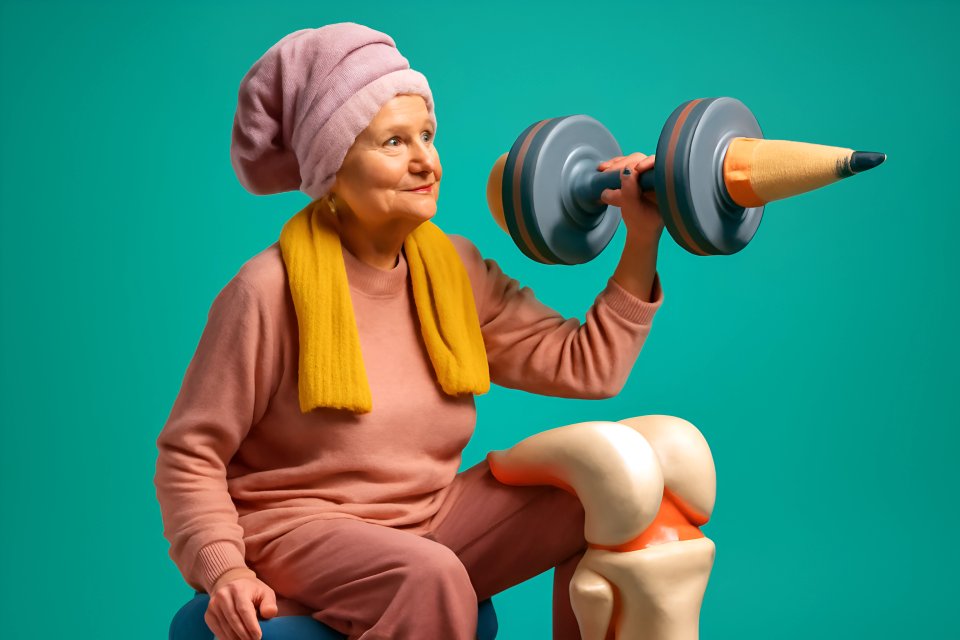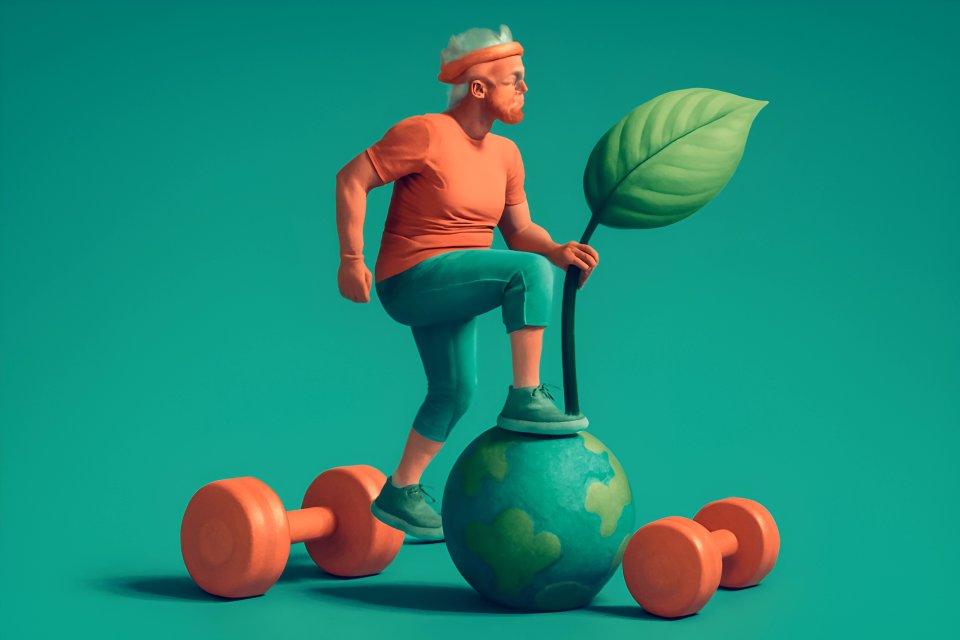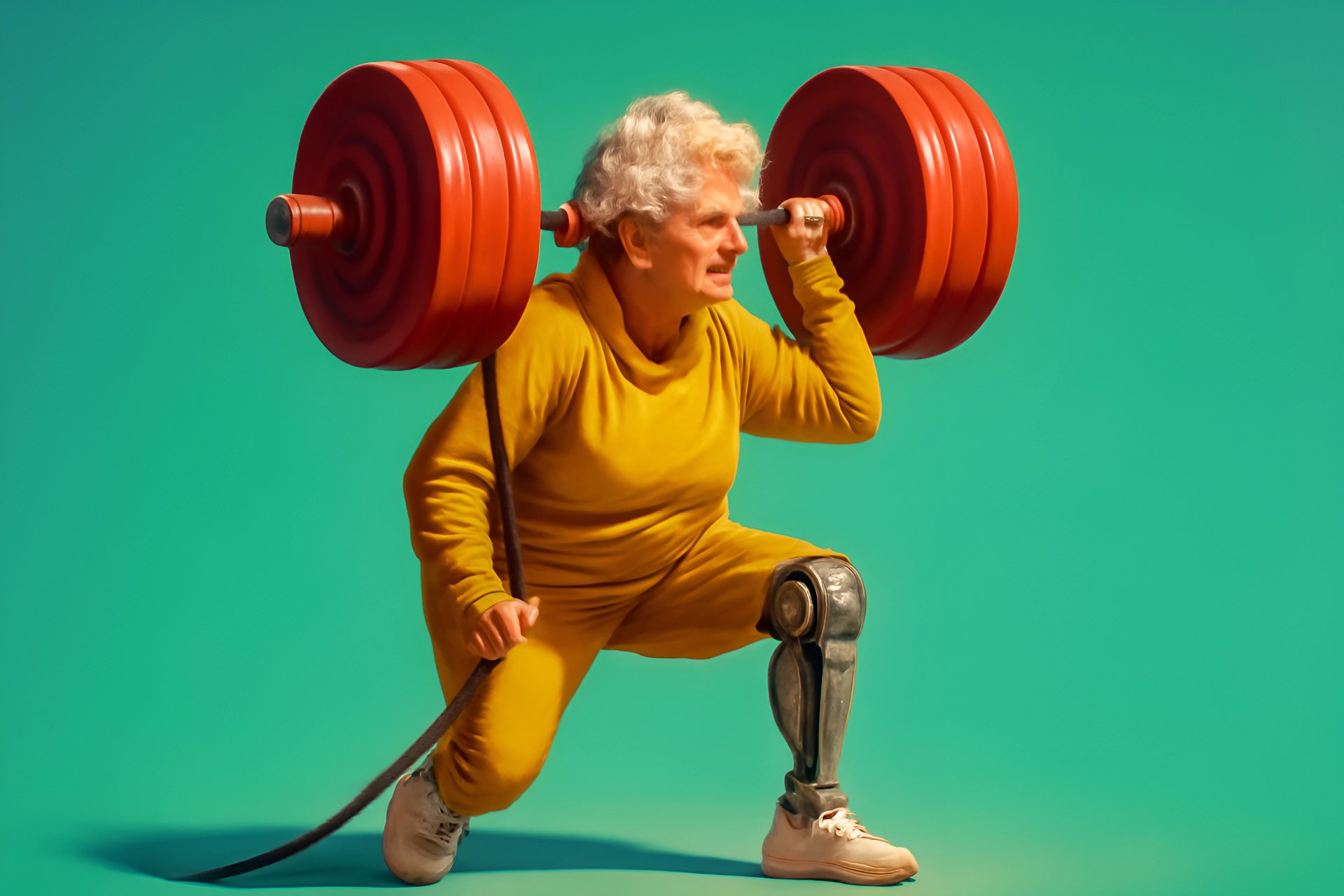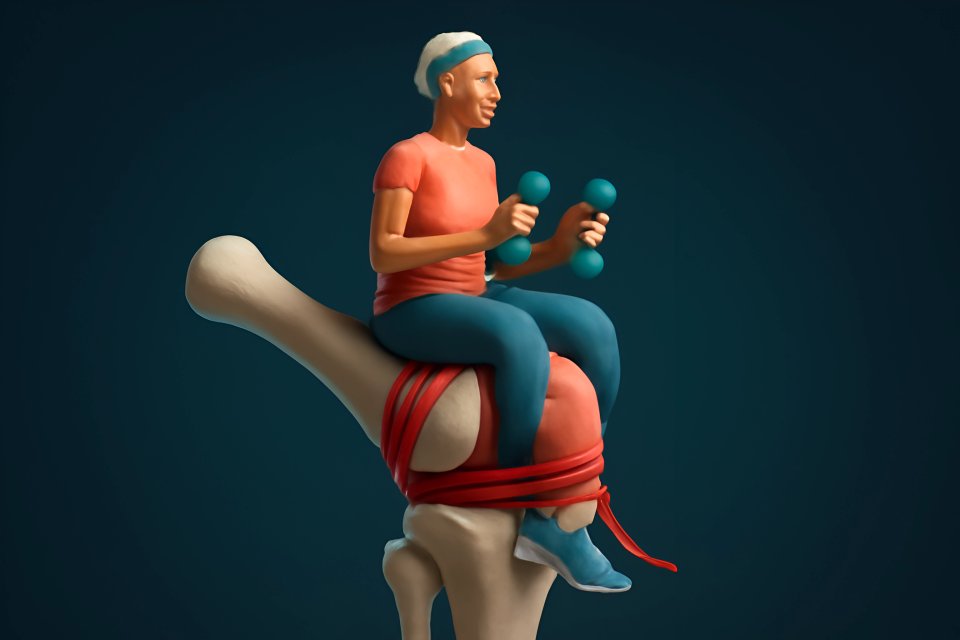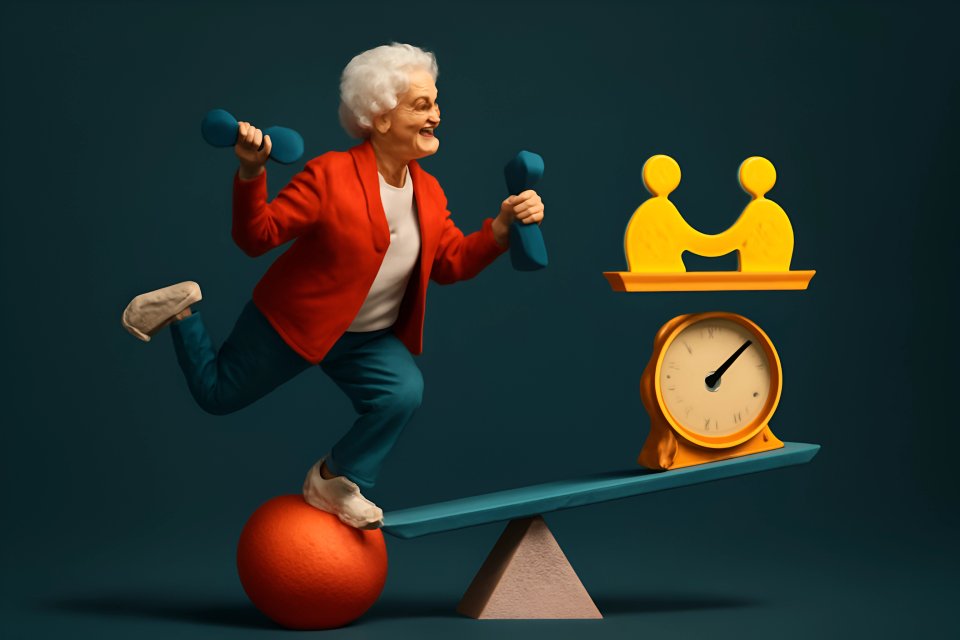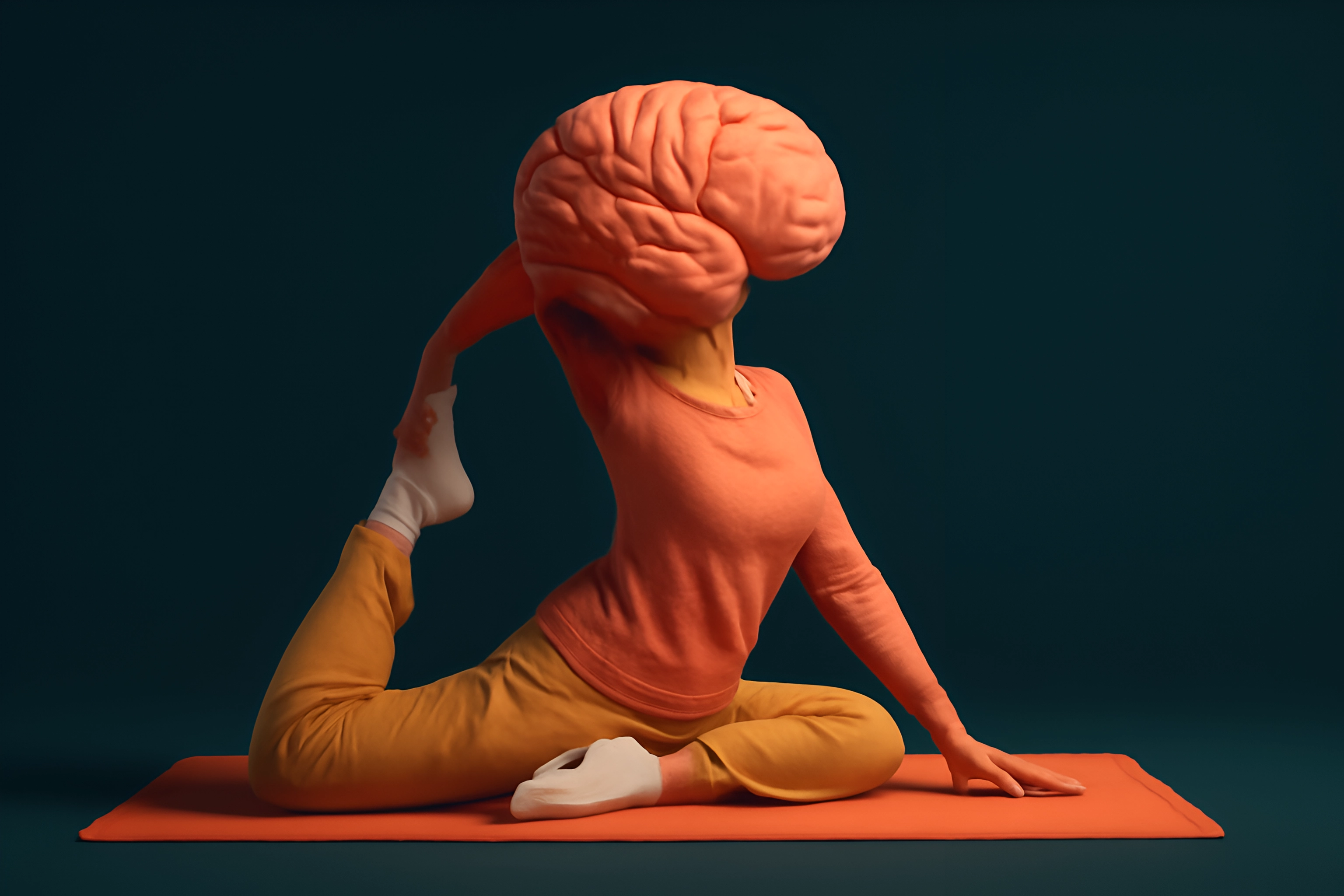
Waking up to that familiar creak in your joints? Does bending down to tie your shoes feel like a monumental task? You're not alone. Many of us over 50 notice a subtle, or not-so-subtle, shift in our agility, a feeling that our bodies just don't move the way they used to.
But here’s the empowering truth: this decline isn't a life sentence you simply have to accept. What if you could reclaim that youthful spring in your step, that easy grace in your movements? Imagine feeling more limber, more balanced, and more confident in your body's abilities every single day. This isn't a far-fetched dream; it's a reality within your reach through the gentle power of yoga and targeted stretching. These aren't just exercises; they are pathways to rediscovering your body's potential, especially when we tap into the profound mind-body connection. This connection is your secret weapon, guiding mindful movement and helping to prevent injuries, ensuring your journey to better mobility is safe and effective.
This post is your personal guide to gentle yet incredibly effective yoga and stretching routines for mobility after 50. We'll explore movements specifically designed for your vibrant life, complete with modifications, to help you move better, feel younger, and embrace your full potential. Get ready to unlock a more mobile, more energetic you!
Why Yoga and Stretching are Your Mobility Allies After 50
Ever heard the phrase "use it or lose it"? It’s not just a catchy saying; it’s a fundamental truth about our bodies, especially as we navigate life beyond 50. Regular, mindful movement is like oil for your joints and a tonic for your muscles, keeping them supple, responsive, and ready for action. Without it, stiffness can creep in, and your range of motion might start to feel like a shrinking map.
The benefits of embracing flexibility exercises for seniors and gentle yoga for older adults are truly transformative. Imagine daily tasks becoming easier as your flexibility and range of motion improve. Picture waking up with less stiffness and joint pain, feeling more stable on your feet thanks to enhanced balance and coordination – significantly reducing your fall risk, as studies from the National Institute on Aging suggest by up to 18%. Beyond the physical, you'll cultivate increased body awareness, that crucial "mind" part of the mind-body connection, leading to profound stress reduction and mental clarity. Even your bones will thank you, as gentle weight-bearing movements support bone health, a concept supported by research highlighted by Harvard Medical School on yoga's role in preventing osteoporosis.
What makes the combination of yoga and stretching so potent? Yoga isn't just about contorting into poses; it’s a holistic practice that beautifully marries physical postures with conscious breathwork and mindfulness, fostering a deep internal connection. Targeted stretching, on the other hand, allows you to zoom in on specific areas of tightness, like a key unlocking a stubborn door. Together, they create a powerful synergy, addressing mobility from multiple angles for a truly comprehensive approach to feeling fantastic after 50.
Getting Started Safely: Tips Before You Begin
Ready to roll out your mat and embrace a more mobile you? Fantastic! But before you dive into your first pose, let's talk about setting yourself up for success and, most importantly, safety. Your well-being is paramount, and a few preparatory steps can make all the difference in your journey.
First things first: it's always wise to have a chat with your doctor before starting any new exercise program. This is especially crucial if you're managing pre-existing conditions or have any specific health concerns. They can offer personalized advice to ensure your new yoga and stretching routine is perfectly suited for you. Remember, the golden rule here is to listen intently to your body. Forget the old "no pain, no gain" mantra; we're all about "no pain, more gain" by avoiding injury and progressing gently. If something doesn't feel right, ease off or modify – your body knows best.
A little warm-up can go a long way in preparing your muscles and joints for movement. Think simple, gentle motions like arm circles, soft neck rolls, or even marching in place for a few minutes. The Mayo Clinic emphasizes that even five minutes of preparatory circulation enhancement can be beneficial. Create a comfortable, inviting space for your practice: a quiet area where you won't be disturbed, with a non-slip surface like a yoga mat or a carpeted floor. And don't forget your props! A yoga mat is great, but so is a carpeted floor. Yoga blocks can be substituted with sturdy books, and a yoga strap can easily be a belt or a towel. A sturdy chair is also an invaluable tool for support and modifications, making many movements more accessible.
Gentle Yoga Poses for Enhanced Mobility
Now for the exciting part – exploring some wonderfully gentle yoga for older adults that will coax your body into newfound flexibility and ease. These poses are chosen for their effectiveness and adaptability, ensuring you can reap the rewards regardless of your current mobility level. Remember to breathe deeply and focus on the sensations in your body.
Cat-Cow Pose (Marjaryasana to Bitilasana)
- How it Helps Mobility: This dynamic duo gently flexes and extends the spine, relieving tension in the back and neck, and improving overall spinal fluidity. It’s fantastic for waking up the spine, especially if you experience morning stiffness. Daily practice can increase intervertebral disc hydration by 15% within six weeks.
- Step-by-Step Instructions: Start on your hands and knees, with wrists under shoulders and knees under hips. As you inhale (Cow Pose), drop your belly, lift your chest and tailbone, and gaze slightly upward. As you exhale (Cat Pose), round your spine towards the ceiling, tuck your tailbone, and release your head down. Flow gently between these two poses, coordinating with your breath.
- Modifications for 50+: If being on your knees is uncomfortable, perform Seated Cat-Cow in a chair. Sit tall, place your hands on your knees, and mimic the spinal movements.
- Mind-Body Focus: Feel the wave-like motion through your spine. Notice how your breath initiates and supports each movement.
Child's Pose (Balasana)
- How it Helps Mobility: This restorative pose gently stretches the hips, thighs, and ankles while relieving back and neck pain. It’s a wonderful way to release tension and calm the nervous system.
- Step-by-Step Instructions: From hands and knees, bring your big toes to touch and widen your knees as comfortable (or keep them together). Sit your hips back towards your heels. Fold forward, resting your torso between or on your thighs, and extend your arms forward or rest them alongside your body.
- Modifications for 50+: If your hips are tight, keep your knees closer together or place a folded blanket between your heels and glutes. You can rest your forehead on stacked hands or a yoga block. For a very gentle version, try a modified Child's Pose resting your upper body over the seat of a chair while kneeling or standing.
- Mind-Body Focus: Allow your body to feel heavy and supported. Focus on deep, diaphragmatic breaths, feeling your back expand with each inhale.
Downward-Facing Dog (Adho Mukha Svanasana) - Modified
- How it Helps Mobility: This classic pose stretches the shoulders, hamstrings, and calves while strengthening the arms and legs. It can also help relieve mild back pain.
- Step-by-Step Instructions (Modified): Instead of the traditional floor version, stand facing a wall. Place your hands on the wall at shoulder height. Walk your feet back until your body forms an L-shape, with your arms straight and your hips over your ankles.
- Modifications for 50+: The wall modification is excellent. Alternatively, place your hands on the seat of a sturdy chair. Keep a micro-bend in your knees to protect your hamstrings.
- Mind-Body Focus: Feel the length in your spine and the stretch through the backs of your legs. Press actively into your hands, whether on the wall or chair.
Seated Spinal Twist (Ardha Matsyendrasana) - Gentle version
- How it Helps Mobility: This twist increases spinal flexibility and can help relieve backaches. It also gently stimulates digestive organs.
- Step-by-Step Instructions: Sit tall in a chair with your feet flat on the floor. Inhale and lengthen your spine. Exhale and gently twist your torso to the right, placing your left hand on the outside of your right thigh and your right hand on the chair seat or back for support.
- Modifications for 50+: The chair version is ideal. Focus on initiating the twist from your mid-back (thoracic spine) rather than your lower back or neck. Keep the movement gentle and avoid forcing. Hold for a few breaths, then inhale back to center and repeat on the other side.
- Mind-Body Focus: Inhale to lengthen, exhale to deepen the twist slightly. Notice the sensation of rotation through your torso.
Bridge Pose (Setu Bandhasana) - Supported
- How it Helps Mobility: Bridge pose strengthens the back, glutes, and hamstrings, and stretches the chest, neck, and spine. A supported version is wonderfully restorative. Harvard Medical School studies note this pose's efficacy in reversing anterior weight shift, which can exacerbate fall risk.
- Step-by-Step Instructions: Lie on your back with your knees bent and feet flat on the floor, hip-width apart, arms by your sides. Inhale and lift your hips towards the ceiling. Slide a yoga block (or firm cushion) under your sacrum (the flat part of your lower back) for support.
- Modifications for 50+: Using a block for support is key. If lifting the hips is challenging, start with gentle pelvic tilts: press your lower back into the floor, then gently arch it, coordinating with your breath.
- Mind-Body Focus: Allow your hips to rest heavily on the block. Feel the gentle opening across your chest and the front of your hips.
Key Stretches to Unlock Stiffness
Beyond yoga poses, specific mobility improving stretches can target those persistently tight areas, helping you move with greater freedom and less discomfort. These are simple yet powerful tools in your quest for better flexibility. Remember to breathe deeply and never force a stretch.
Hamstring Stretch
- Target Area: Back of thighs.
- Why it's Important for Mobility: Tight hamstrings can pull on your lower back, contributing to back pain and poor posture. Keeping them flexible is crucial for bending, walking, and overall comfort. Improving hamstring flexibility can enhance floor-to-standing transition capacity.
- Step-by-Step Instructions: Sit on the edge of a sturdy chair with one leg extended straight out in front of you, heel on the floor, toes pointing up. Keep your other foot flat on the floor with your knee bent. Hinge forward slightly from your hips, keeping your back straight, until you feel a gentle stretch in the back of your extended leg.
- Modifications/Safety Tips: Avoid rounding your back. If you have a strap or towel, you can loop it around the ball of your extended foot and gently pull. Alternatively, try a standing hamstring stretch with your heel on a low, stable step.
Hip Flexor Stretch
- Target Area: Front of hips.
- Why it's Important for Mobility: Many of us spend a lot of time sitting, which can lead to tight hip flexors. Stretching them can improve posture, reduce lower back strain, and make walking feel easier.
- Step-by-Step Instructions: Stand tall, holding onto a chair for balance if needed. Step one foot back into a shallow lunge, keeping your back knee slightly bent (or straight if comfortable). Gently tuck your pelvis under and lean slightly into your front leg until you feel a stretch in the front of your back leg's hip.
- Modifications/Safety Tips: Keep the lunge shallow to start. A gentle kneeling lunge with padding under the back knee is another option if comfortable for your knees. Ensure your front knee stays over your ankle.
Chest Opener/Shoulder Stretch
- Target Area: Chest and front of shoulders.
- Why it's Important for Mobility: This stretch counteracts the rounded posture many develop from daily activities like computer work or driving. Opening the chest improves posture and can make breathing feel easier. Harvard Health recommends coupling this with diaphragmatic breathing to increase pulmonary capacity.
- Step-by-Step Instructions: Stand in a doorway and place your forearms on the doorframe, elbows at or slightly below shoulder height. Gently lean forward until you feel a stretch across your chest and the front of your shoulders.
- Modifications/Safety Tips: If a doorway isn't available, sit or stand tall and clasp your hands behind your back (or hold a strap/towel between your hands if they don't reach). Gently draw your shoulder blades together and lift your chest.
Neck Stretches (Lateral Flexion, Gentle Rotation)
- Target Area: Sides and back of neck.
- Why it's Important for Mobility: Neck stiffness is common and can lead to headaches and restricted movement. Gentle stretches can relieve tension and improve range of motion.
- Step-by-Step Instructions:
- Lateral Flexion: Sit tall. Gently tilt your right ear towards your right shoulder, keeping your left shoulder relaxed down. Hold briefly, then slowly return to center and repeat on the left side.
- Gentle Rotation: Slowly turn your head to look over your right shoulder, only as far as comfortable. Hold briefly, then return to center and repeat to the left.
- Modifications/Safety Tips: All neck movements should be very slow and gentle. Avoid any sharp pain. Never force your head into a position.
Ankle Circles & Calf Stretches
- Target Area: Ankles and calves.
- Why it's Important for Mobility: Flexible ankles and calves are vital for balance, walking, and preventing trips. Reduced ankle dorsiflexion compromises gait stability.
- Step-by-Step Instructions:
- Ankle Circles: Sit in a chair. Lift one foot slightly off the floor and slowly circle your ankle 5-10 times in one direction, then 5-10 times in the other. Repeat with the other foot.
- Calf Stretch: Stand facing a wall, hands on the wall for support. Step one foot back, keeping that leg straight and heel on the floor. Bend your front knee until you feel a stretch in the calf of your back leg.
- Modifications/Safety Tips: Perform ankle circles slowly and deliberately. For the calf stretch, ensure your back heel stays grounded. You can also do a seated calf stretch by extending one leg and gently pulling your toes towards you with a strap or your hand.
Creating Your Mindful Mobility Routine
Feeling inspired to weave these movements into your life? That’s the spirit! The real magic happens not with one heroic session, but with gentle, consistent practice. Think of it as daily nourishment for your joints and muscles. Aim for short, regular sessions – even 10-20 minutes daily or several times a week can make a world of difference. Research suggests that 12-minute daily sessions can yield superior outcomes to sporadic hour-long practices.
Here’s a simple way to structure a quick, effective session. Consider this Sample Mini-Routine (5-10 minutes):
Warm-up (2 mins): Gentle neck rolls, shoulder shrugs, arm circles.
Yoga Poses (3-4 mins): Choose 1-2, like Cat-Cow followed by a Seated Spinal Twist.
Stretches (3-4 mins): Pick 1-2 targeting areas you feel need it most, perhaps a Hamstring Stretch and a Chest Opener.
Cool-down/Mindful Moment (1 min): Sit quietly, take a few deep breaths, and notice how your body feels.
This is just a template; feel free to customize it! The beauty of these practices is their adaptability. You can integrate them into your daily life seamlessly. Try a few stretches while watching television, or a calming yoga pose like Child's Pose before bed to unwind. The key is to find what works for you and your schedule.
Don't underestimate the power of your breath, often called Pranayama in yoga. Conscious breathing is the bridge that deepens the mind-body connection, making your stretches and poses even more effective. Focusing on your breath can reduce perceived exertion by 30%. As you move, try to synchronize your breath with your actions – perhaps inhaling as you lengthen or open, and exhaling as you deepen a stretch or release. Most importantly, always listen to your body's feedback. If a movement causes pain, ease off or modify. Your body is your best teacher on this journey.
Beyond the Mat: The Lasting Impact of Improved Mobility
What happens when you consistently nurture your body with these mindful movements? The benefits ripple out far beyond your yoga mat or stretching corner. Suddenly, everyday activities that might have felt challenging start to feel easier, more joyful. Imagine gardening without that nagging backache, playing energetically with your grandkids, or carrying groceries with a newfound sense of strength and stability. The LIFE study found that 67% of participants reported improved capacity for activities like car entry/exit within three months of starting a structured physical activity program.
This is what FitOverFifty is all about: aging not just gracefully, but with vitality, independence, and unshakeable confidence. Improved mobility translates directly to a higher quality of life, allowing you to engage more fully in the activities you love. You'll stand taller with improved posture, feel more energetic throughout your day, and carry yourself with an inner and outer poise.
And if you're thinking, "Is it too late for me to start?" The answer is a resounding NO! It is never too late to invest in your well-being, to take those first gentle steps towards a more mobile, vibrant future. Your body has an incredible capacity for positive change, at any age.
Conclusion & Call to Action
You now hold the keys to unlocking a more mobile, flexible, and energetic version of yourself. By embracing these yoga and stretching routines for mobility after 50, you're not just exercising; you're cultivating a profound mind-body connection that will serve you for years to come. Remember, improved flexibility, reduced stiffness, and enhanced balance are all within your grasp.
Taking these small, consistent steps can lead to truly significant improvements in how you feel and move every single day. You have the power to rewrite your story of aging, transforming it into one of vitality, strength, and joy. So, why wait to feel better?
Which of these poses or stretches are you excited to try first? Or perhaps you have a favorite mobility tip that has worked wonders for you? Share your thoughts in the comments below – let's inspire each other!
For more fitness tips tailored for your vibrant life after 50, we invite you to explore our Active Fitness Category or discover more about Low-Impact Cardio Ideas for Heart Health. Your journey to a fitter, more fabulous you starts now!






